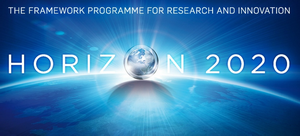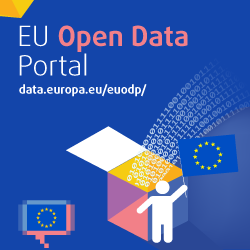Welcome in the open-H2020 observatory

The open-H2020 observatory is a simple way to browse and discover the projects developed within the H2020 programme. Using the available CORDIS-opendata, visitors can easily discover the most interesting projects, have a rough idea of their topic, take a look on partnership composition and geographical distribution. Visitors are enabled also to see how EC-fundings have been split amongst partners, when the project started and finished and much more.
The open-h2020 observatory has been conceived and developed by Fabio Disconzi. No bureaucracy has been involved in the development of the H2020 observatory (otherwise it wouldn't be online yet). Data are improved according to CORDIS opendata updating (once a month).
Horizon 2020 projects browser
Results (please type some words).
Browse among H2020 projects
Open-H2020 at a glance
Open-H2020 observatory is an initiative of a private citizen who is appassionate about opendata and web development. Open-h2020 facts and figures comes from the CORDIS opendata, available here European opendata Portal.
For each project visitors are enable to easily understand main characteristics of the project like: geographical distribution of the partnership (thanks to the interactive map), the main topic (thanks to the cloud of words), partnership composition and EC-funding distribution (thanks to the partnership table), the starting and finish date and much more.
Since Horizon 2020 is the current ongoing research programme many projects don't have complete data. CORDIS data are updated roughly once a month.
Horizon 2020 is open to everyone.
Last update: 2018-october-09.
Num projects
0Total Cost €
0EC-Contrib. €
0Views
0European Union projects
The following interactive map shows the distribution of EC-contributions within the Horizon 2020 programme for the European Union members (28 countries in 2016).
Mappa
| # | country | num. projects | tot. contribution |
|---|---|---|---|
| 1 | Germany | 15˙308 | 7˙673˙217˙675 |
| 2 | United Kingdom | 14˙166 | 6˙559˙774˙756 |
| 3 | Spain | 12˙797 | 4˙657˙138˙704 |
| 4 | Italy | 11˙638 | 4˙215˙162˙927 |
| 5 | France | 11˙579 | 5˙701˙482˙310 |
| 6 | Netherlands | 7˙962 | 4˙008˙897˙407 |
| 7 | Belgium | 6˙005 | 2˙551˙141˙542 |
| 8 | Greece | 3˙800 | 1˙195˙122˙538 |
| 9 | Sweden | 3˙768 | 1˙771˙679˙361 |
| 10 | Austria | 3˙608 | 1˙442˙659˙288 |
| 11 | Denmark | 3˙011 | 1˙345˙605˙159 |
| 12 | Portugal | 2˙710 | 830˙674˙702 |
| 13 | Finland | 2˙632 | 1˙152˙853˙411 |
| 14 | Ireland | 2˙186 | 903˙284˙015 |
| 15 | Poland | 1˙973 | 537˙061˙223 |
| 16 | Czech Republic | 1˙265 | 364˙851˙486 |
| 17 | Romania | 1˙130 | 207˙636˙017 |
| 18 | Hungary | 1˙130 | 290˙732˙798 |
| 19 | Slovenia | 999 | 278˙229˙387 |
| 20 | Cyprus | 664 | 233˙359˙568 |
| 21 | Bulgaria | 645 | 113˙716˙040 |
| 22 | Estonia | 615 | 192˙088˙525 |
| 23 | Croatia | 554 | 99˙807˙010 |
| 24 | Slovakia | 477 | 102˙455˙712 |
| 25 | Lithuania | 446 | 70˙146˙544 |
| 26 | Luxembourg | 424 | 141˙160˙770 |
| 27 | Latvia | 384 | 78˙515˙107 |
| 28 | Malta | 170 | 26˙765˙140 |
| # | nazione | 112˙046 | 46˙745˙219˙122 |
Horizon 2020
The Horizon 2020 (H2020) is the current European Research and Innovation programme with nearly 80 billion euro of funding available over 7 years (2014 to 2020) in addition to the private investment that this money will attract. For more information about the H2020 programme visit the website: ec.europa.eu/programmes/horizon2020/.

Programme sections are:
- Excellent Science: activities under this Pillar aim to reinforce and extend the excellence of the Union’s science base and to consolidate the European Research Area in order to make the Union’s research and innovation system more competitive on a global scale.
- Industrial Leadership: this pillar aims to speed up development of the technologies and innovations that will underpin tomorrow's businesses and help innovative European SMEs to grow into world-leading companies.
- Societal Challenges: Horizon 2020 reflects the policy priorities of the Europe 2020 strategy and addresses major concerns shared by citizens in Europe and elsewhere.
- Spreading Excellence and Widening Participation: Maximising investment in research and innovation will enable the European Research Area to function in a more streamlined and homogeneous way, allowing the individual strengths of each Member State to be optimised.
- Science with and for Society: The specific objective is to build effective cooperation between science and society, to recruit new talent for science and to pair scientific excellence with social awareness and responsibility.
- Cross-cutting activities (focus areas)
- Fast Track to Innovation Pilot
- European Institute of Innovation and Technology (EIT)
- Euratom
- Smart Cyber-Physical Systems
The open-H2020 observatory lists the EU projects developed within the Horizon 2020 programme. Data are provided by the European Union Open Data Portal which provides data also about the Seventh Framework programme (take a look of the 7FP observatory, only in italian language), the Sixth Framework Programme for research and technological development (FP6) from 2002 to 2006, data on all projects funded by the European Union under the Fifth Framework Programme for research and technological development (FP5) from 1998 to 2002, etc.
Do you know...
Have you ever heard anything about these Horizon 2020 projects?
CHIPTRANSFORM (2018)
On-chip optical communication with transformation optics
Cost: 150˙000€ / Contrib: 150˙000€
CARBYNE (2020)
New carbon reactivity rules for molecular editing
Cost: 2˙000˙000€ / Contrib: 2˙000˙000€
